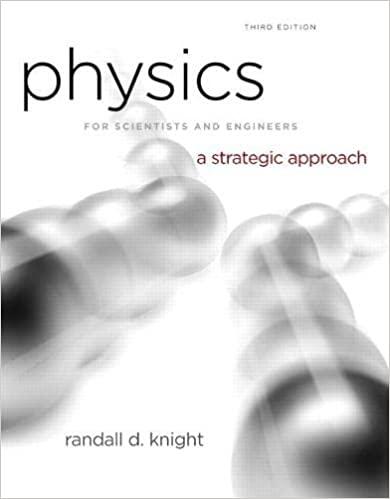Question
(please try to answer every question ans clearly show which answer is for which. thank you) Part 1 For each description, first PREDICT what you
(please try to answer every question ans clearly show which answer is for which. thank you)
Part 1
For each description, first PREDICTwhat you believe each graph will look like before actually doing the observation. You'll notice that your graphs are kind of noisy so you'll have to learn to ignore that.
Experiment 1
Predict and then observe the position versus time graph for a person moving away from the origin at a steady (constant) velocity. Then repeat for a person moving toward the origin at a steady (constant) velocity. The easiest way to predict a graph is to just sketch it.
- Construct a properly scaled motion diagram for each movement, with velocity vectors and coordinate system. See sections 1.1 through 1.4 in the text for how to do motion diagrams.
Experiment 2
Predict and then observe the velocity versus time graph for a person moving away from the origin at a steady (constant) velocity. Then repeat for a person moving toward the origin at a steady (constant) velocity.
- Explain how these graphs correspond to the motion diagrams you drew in Experiment 1.
Experiment 3
Predict and then observe both the position-time and the velocity-time graphs for a person moving away from the motion detector at about twice the speed as experiment 1.
- Construct a motion diagram for this person as before and explain the differences compared to experiment 1.
- How, and why, are these graphs different from those in experiments 1 and 2?
Experiment 4
Predict and then observe the velocity-time graph (do not look at position yet) for a person who:
- Moves away from the motion detector slowly and steadily for 5 seconds, then
- Stands still for 5 seconds, then
- Moves toward the motion detector about twice as fast as before
Now predict and then observe the position-time graph for this motion.
- Construct a motion diagram for this person as before and explain its relationship to the previous experiments.
- What have you observed to be the relationship between position and velocity graphs?
Part 2
InstructionsMove however you have to move to make each of the following graphs. Do not be a perfectionist.
- In each case, describe in words what you had to do, and include a motion diagram.It is best that you take turns rather than having one person do them all.
- Note that there are no numbers on the graphs so getting the shape and sign right is all you need to do.
- For each, include an explanation of how you moved as well as your measured graphs. You may find some of them hard to do exactly, but do your best to at least get close.


Step by Step Solution
There are 3 Steps involved in it
Step: 1

Get Instant Access to Expert-Tailored Solutions
See step-by-step solutions with expert insights and AI powered tools for academic success
Step: 2

Step: 3

Ace Your Homework with AI
Get the answers you need in no time with our AI-driven, step-by-step assistance
Get Started


